Newton Nursery
Newton Nursery
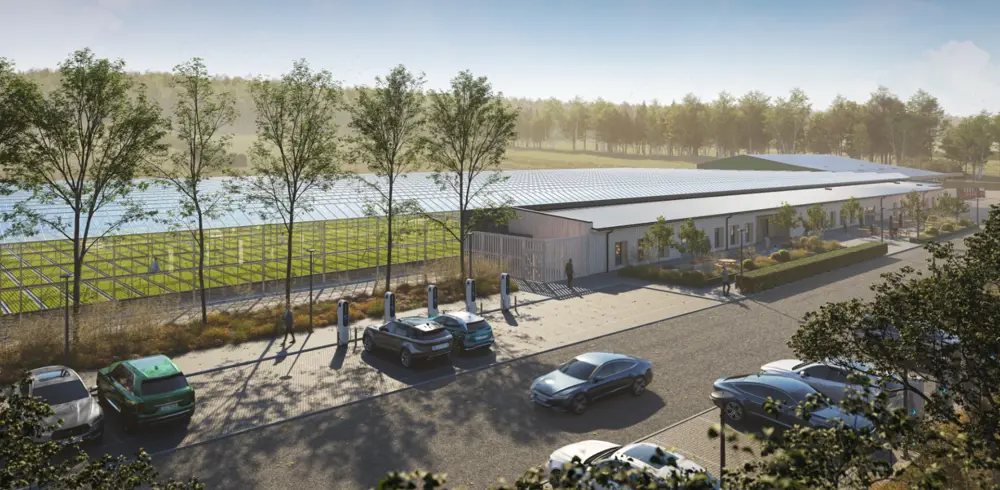
Our tree nursery is in north-east Scotland, around 30 miles from Inverness. We grow trees from seed, known as saplings, to support timber production and woodland creation across Scotland.
In 2025, we moved into our new, modern glasshouse. It's about 12,000 square metres (m²) in size. That’s roughly the area of two football pitches. Thanks to this upgrade we've increased capacity from 7 million to around 25 million trees every year.
Why Newton
In the past, we operated several small nurseries across Scotland. Today, Newton is our only one. The local climate is drier and sunnier than other parts of Scotland. At 57 degrees north we get almost 18 hours of daylight during summer - an ideal climate for growing strong, healthy trees.
What we grow
Our skilled nursery team grow millions of trees each year using two methods: cell grown, and plug+1. Plug+1 means seeds start in a plug. They’re then replanted into our fields for a year (this is the +1). You’ll likely know the final trees as bare root.
Our core species include both conifers and broadleaves such as:
- Scots pine
- sitka spruce
- lodgepole pine
- Norway spruce
- aspen
- alder
- silver birch
- downy birch
- rowan
- goat willow
Plug+1
Each spring, we start by sowing seeds in Tape4Trees, which is a long strip of small paper plugs. Each plug has a tree seed and peat free soil that helps the seed grow . We keep plugs in a controlled glasshouse where they start to grow. Then, we plaint the strongest seedlings outside in the fields. They stay in the fields for another year before we lift them and send them to their final planting site.
We’re proud to be the first tree producers in the world to use Tape4Trees technology. It means we can fit more trees in our glasshouse and transplant up to 1 million trees per day into our fields - 16 times faster than our older methods.
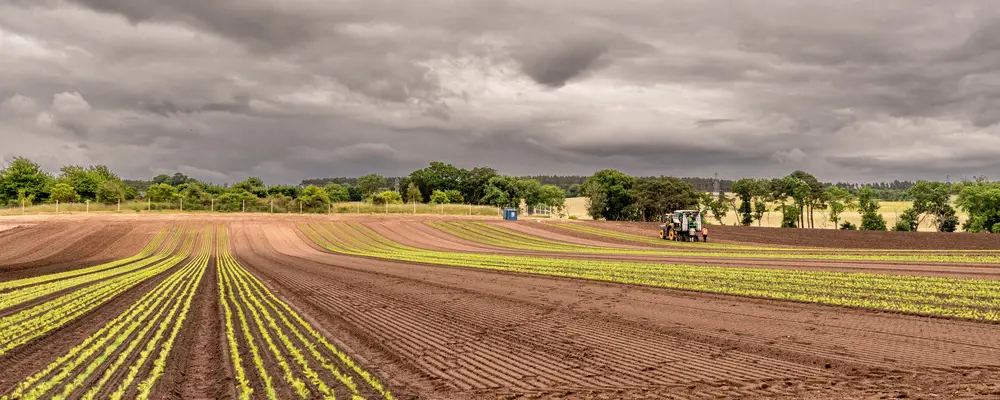
Tape4Trees is a one-of-a-kind technology that allows us to plant 1 million trees a day
Cell grown
For cell grown trees, we sow seeds into seed trays, much like you might see in your local garden centre. A few weeks later, AI-powered cameras check each one and select the strongest seedlings. These are then transplanted into larger cell trays, which give the roots more space to develop. Our glasshouse team looks after these cells for six to 18 months, until they’re ready to plant in Scotland’s forests.
Our nursery is also home to other projects such as seed orchards for spruce and wild apples.
Learn more about our new glasshouse
The journey from seed to sapling
Planting the seeds
Growing a tree always begins with a seed. We select the best seeds from the strongest trees to help create the healthiest forests possible.
At Newton, we grow trees using two methods: bare-root and cell-grown. Each species is matched with the most suitable approach, but all start their journey in our glasshouse. It can take up to three years for a seed to become a forest-ready sapling.
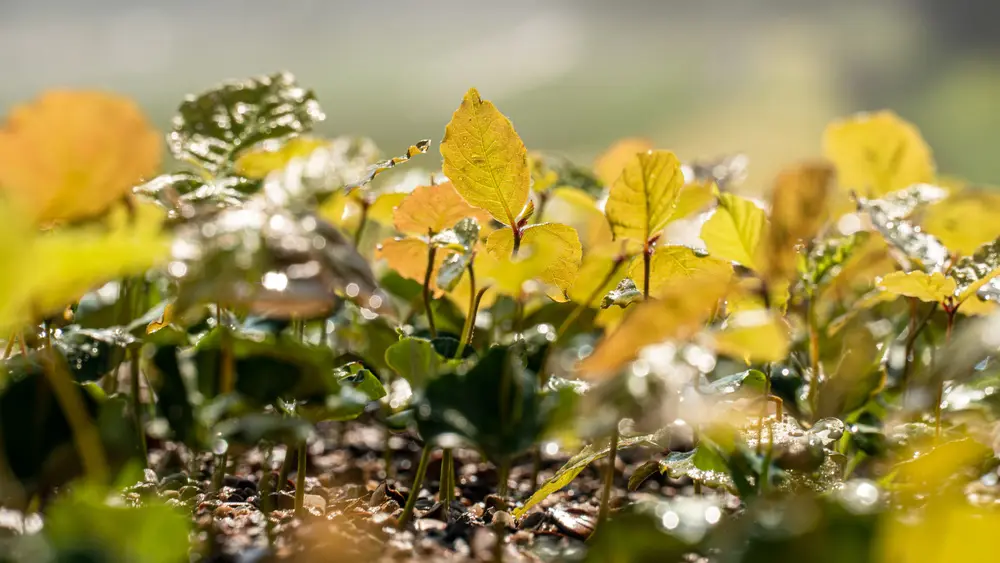
Transplanting
After spending 12 to 16 weeks in the glasshouse, our bare-root trees are transplanted into the fertile fields surrounding the nursery.
This is where our Tape4Trees technology boosts productivity—specialist planters can place up to one million trees per day into the ground, a task that previously took weeks. Speedy transplanting helps the young trees take full advantage of Moray’s long summer days, giving them the best chance to grow into strong, healthy saplings.
Transplanting cell-grown trees is different. They remain in the glasshouse until they are ready to be delivered to forests across Scotland. First, seeds are planted into mini-plugs. After a few weeks, AI-powered vision grading selects the healthiest seedlings, which are then carefully transplanted into larger cell trays—similar to those found in garden centres.
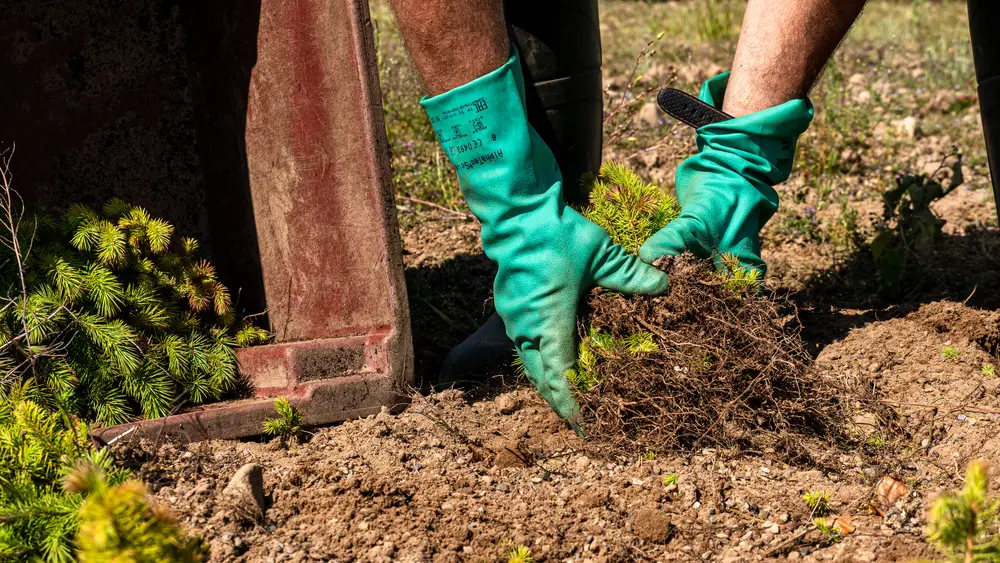
Daily care and attention
Whether growing in the fields or the glasshouse, our trees need constant care. This includes regular watering, weeding to optimise space and nutrient availability, and close monitoring to ensure strong growth.
Our fields are weeded by hand, or by ‘Garford’ an AI powered weeder who works with the Tape4Trees system and allows us to mechanically weed even the smallest of trees and lowered our need to weed by hand.

Final planting site
Once our seedlings reach approximately 50cm in height, they are ready for their final journey—to be planted in woodlands across Scotland. Each year, we nurture and dispatch around 25 million young trees, most of which are grown right here at Newton.
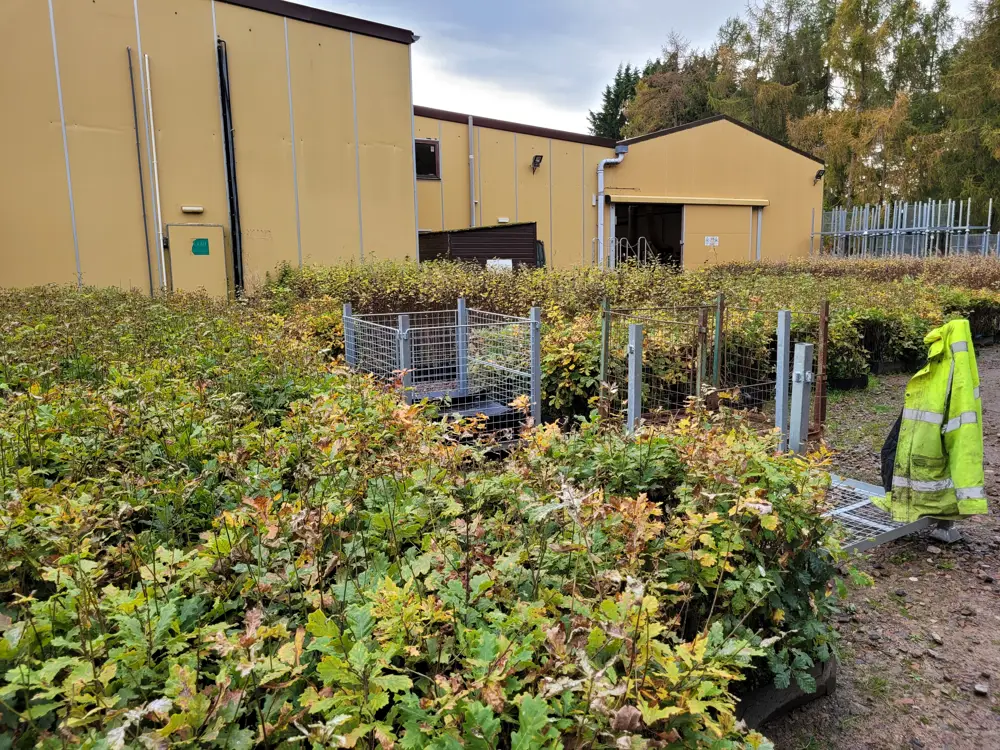
Our history of growing trees
Newton Nursery has a proud history. It began as a working farm, but in 1931 it became one of the first Forestry Commission nurseries. Since then, we estimate that more than 300 million trees have grown here. This goes some way to restoring Scotland’s forests for generations to come.
Learn more about the history of our nursery
Explore our nursery
Learn more about how the nursery works, where the seeds come from, how we care for them at the nursery and how we are modernising for the future.